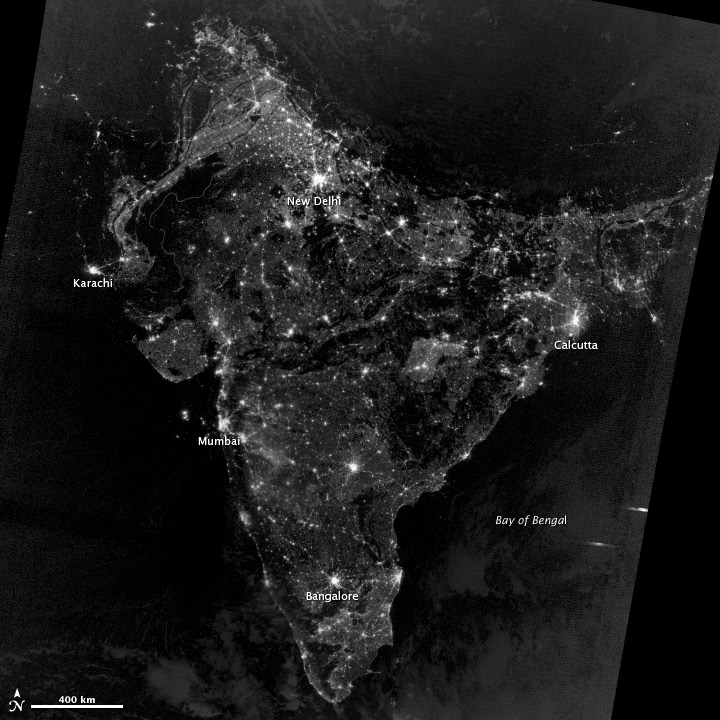One Democracy, Many Faces: A Comparative Analysis of India and the United States’ Political Systems
Democracy, though universal in spirit, wears many masks in practice. Nowhere is this more evident than in the contrast between India and the United States—two of the world’s largest democracies by population and influence. At first glance, the United States appears a model of binary simplicity, dominated by two major parties, while India dazzles with its kaleidoscope of thousands of registered political parties. Yet, beneath the surface, both systems exhibit surprising structural similarities, even as they remain deeply shaped by culture, federalism, and history. This blog post explores how these two democracies operate, how political coalitions form, what drives voter behavior, and how money and power flow through their respective political arteries.
I. Surface Contrast: Two Parties vs Thousands
The United States operates with a de facto two-party system: the Democratic Party and the Republican Party dominate federal, state, and local elections. Third parties exist—such as the Libertarian Party or Green Party—but rarely gain substantial traction.
In contrast, India has over 2,500 registered political parties, with around 8–10 playing dominant roles at the national level. The country’s parliamentary elections regularly feature dozens of parties contesting for 543 Lok Sabha seats. While the Indian National Congress and Bharatiya Janata Party (BJP) are the two major national parties, coalition politics is the norm, not the exception.
II. Converging Into Coalitions: The Illusion of Multiplicity
Despite the appearance of plurality, India often resolves into a federated two-bloc structure at the federal level:
-
The National Democratic Alliance (NDA), led by the BJP, currently holds power.
-
The Indian National Developmental Inclusive Alliance (INDIA), spearheaded by Congress and regional allies, forms the primary opposition.
Similarly, in the U.S., despite internal ideological diversity, parties function as umbrella coalitions:
-
The Democratic Party contains progressives, centrists, and moderates.
-
The Republican Party includes fiscal conservatives, Christian evangelicals, libertarians, and populist-nationalists.
Each party unites disparate voter blocks around a common political brand. Thus, both India and the U.S. ultimately reflect a coalition logic, even if one appears more fragmented.
III. Federalism Shapes the Political Landscape
Federalism deeply shapes both democracies—but differently:
-
In India, federalism is asymmetric. States like Tamil Nadu, West Bengal, and Telangana are governed by strong regional parties with little or no presence outside their borders. The linguistic, cultural, and religious diversity of India makes regional identities extremely potent. Regional parties can make or break national coalitions.
-
In the United States, states enjoy substantial autonomy, but political identity is more ideologically homogeneous across geographies. State politics often mirror national party alignments. However, "purple states" (like Arizona or Georgia) can swing national outcomes, just as swing constituencies in Uttar Pradesh or Maharashtra do in India.
IV. Inner Workings: Congress vs Parliament
The U.S. Congress is a bicameral legislature:
-
The House of Representatives is population-based.
-
The Senate gives equal representation to each state.
India's Parliament also has two chambers:
-
Lok Sabha (Lower House) is based on population.
-
Rajya Sabha (Upper House) represents states but is indirectly elected.
Party discipline is stricter in India due to the anti-defection law. MPs can't vote against party lines without risking disqualification. In contrast, U.S. legislators often cross party lines on key votes, especially in the Senate.
V. The Role of Money: A Tale of Two Influences
In the U.S., campaign finance is highly institutionalized:
-
Super PACs and dark money groups play an outsized role.
-
The Citizens United decision (2010) deregulated campaign spending by corporations and unions.
-
Campaigns are billion-dollar operations, particularly at the presidential level.
India operates under a murkier model:
-
Electoral Bonds, introduced in 2017, were designed to make political funding more transparent, but critics argue they increase opacity.
-
Corporate donations, cash hoarding, and the use of shell entities are common.
-
Parties spend heavily during elections, particularly on rallies, logistics, media, and direct cash or goods to sway voters.
In both countries, money is power, but the mechanisms of influence differ.
VI. Voter Psychology and Political Issues
Top Political Issues in the U.S. (as of 2025):
-
Inflation and economy
-
Immigration and border control
-
Abortion and reproductive rights
-
Gun control and public safety
-
Climate change and energy
-
AI and tech regulation
Top Political Issues in India (as of 2025):
-
Unemployment and economic inequality
-
Caste and identity politics
-
Religious polarization
-
Agricultural reform and farmers’ rights
-
Corruption and governance
-
Federal resource allocation
Voters in both countries are motivated by a mix of identity, ideology, and practical concerns, though the specific issues differ.
VII. Political Culture: Uniquely Democratic
-
India’s democracy is noisy, theatrical, and massive. Voting takes place over weeks. Turnout exceeds 65%. People vote at age 18. Democracy often functions at the edge of chaos, but also with surprising resilience.
-
America’s democracy is institutionally robust but strained by polarization. Turnout is lower (around 60% in presidential years). Gerrymandering, voter suppression debates, and misinformation complicate electoral legitimacy.
Each democracy has evolved culturally distinct norms:
-
In India, voters may overlook corruption if delivery of welfare schemes is effective.
-
In the U.S., political polarization can override objective performance metrics—loyalty to party often trumps all.
VIII. Common Threads: Diversity and Democratic Gravity
Despite their differences, both democracies exhibit certain gravitational constants:
-
Big-tent coalitions are inevitable in mass democracies.
-
Money, media, and messaging drive outcomes more than manifestos.
-
Regional diversity, whether by state or identity group, ensures no party remains dominant forever.
-
Voter psychology is complex—motivated by faith, family tradition, caste/class, economy, or single issues.
Conclusion: Democracy, Designed Uniquely
Democracy doesn’t wear a single uniform. India and the United States are living proof. One is chaotic, multilingual, and hyperlocal; the other is polarized, powerful, and increasingly influenced by digital and financial ecosystems. Yet both show how, ultimately, democracy is less about structure and more about people—their aspirations, frustrations, identities, and imaginations.
Each country must constantly innovate, reform, and protect its political institutions. There is no perfect model—only unique paths toward the ideal of government by the people, for the people, and of the people.
Democracy is not a finished product; it is a living experiment. India and the United States may look different in form, but both remind us that the future of democracy lies in pluralism, participation, and perpetual renewal.
एक लोकतंत्र, अनेक रूप: भारत और अमेरिका की राजनीतिक प्रणालियों की तुलना
लोकतंत्र एक सार्वभौमिक विचार है, लेकिन हर देश में इसकी अभिव्यक्ति अलग होती है। भारत और अमेरिका—दुनिया के दो सबसे बड़े लोकतंत्र—इस विविधता के सटीक उदाहरण हैं। एक ओर अमेरिका है जहाँ दो प्रमुख राजनीतिक दलों का प्रभुत्व है, वहीं भारत में हजारों राजनीतिक दल हैं। फिर भी, गहराई में देखें तो दोनों देशों की राजनीतिक संरचनाएँ कई मामलों में एक जैसी हैं, जबकि उनका राजनीतिक व्यवहार, संस्कृति, और इतिहास उन्हें विशिष्ट बनाते हैं।
इस ब्लॉग पोस्ट में हम यह विश्लेषण करेंगे कि दोनों लोकतंत्र कैसे कार्य करते हैं, राजनीतिक गठबंधन कैसे बनते हैं, मतदाता किन मुद्दों पर मतदान करते हैं, और राजनीति में धन की क्या भूमिका है।
I. सतही अंतर: दो दल बनाम हजारों दल
अमेरिका में दो प्रमुख राजनीतिक दल हैं — डेमोक्रेटिक पार्टी और रिपब्लिकन पार्टी। तीसरे दल भी मौजूद हैं जैसे कि लिबर्टेरियन पार्टी या ग्रीन पार्टी, लेकिन उनका प्रभाव सीमित है।
भारत में 2,500 से अधिक पंजीकृत राजनीतिक दल हैं। राष्ट्रीय राजनीति में लगभग 8–10 दल प्रमुख भूमिका निभाते हैं। आम तौर पर, संसद में गठबंधन की सरकारें बनती हैं, जहाँ विभिन्न दल साथ आकर सरकार या विपक्ष का निर्माण करते हैं।
II. अंततः दो गुटों में संघनन
हालाँकि भारत में राजनीतिक बहुलता है, लेकिन केंद्र की राजनीति में दो मुख्य गठबंधनों में संघनन होता है:
-
राष्ट्रीय जनतांत्रिक गठबंधन (NDA) — भाजपा के नेतृत्व में सत्ताधारी गठबंधन।
-
इंडियन नेशनल डेवलपमेंटल इन्क्लूसिव अलायंस (INDIA) — कांग्रेस और अन्य क्षेत्रीय दलों का गठबंधन।
अमेरिका में भी दोनों प्रमुख दल विचारधारात्मक गठबंधन बनाते हैं:
-
डेमोक्रेटिक पार्टी में प्रगतिशील, मध्यमार्गी, और उदारवादी शामिल हैं।
-
रिपब्लिकन पार्टी में कर-कटौती समर्थक, धार्मिक रूढ़िवादी, राष्ट्रवादी, और व्यापार समर्थक लोग शामिल हैं।
दोनों देशों में मतदाता विविध होते हुए भी एक राजनीतिक छतरी के नीचे एकत्रित होते हैं।
III. संघवाद और राजनीति
भारत में संघवाद विषम है। तमिलनाडु, पश्चिम बंगाल, और तेलंगाना जैसे राज्यों में शक्तिशाली क्षेत्रीय दल सत्ता में हैं, जिनकी राष्ट्रीय उपस्थिति कम है। भाषाई, धार्मिक, और सांस्कृतिक विविधता भारत की राजनीति को गहराई से प्रभावित करती है।
अमेरिका में भी राज्यों के पास अधिकार हैं, लेकिन अधिकांश राज्यों की राजनीतिक पहचान राष्ट्रीय स्तर की पार्टी से जुड़ी होती है। तथाकथित स्विंग स्टेट्स (जैसे जॉर्जिया या एरिज़ोना) चुनाव परिणाम को प्रभावित कर सकते हैं, जैसे भारत में उत्तर प्रदेश या महाराष्ट्र करते हैं।
IV. संसद बनाम कांग्रेस की कार्यप्रणाली
अमेरिकी कांग्रेस दो सदनों में बंटी है:
-
हाउस ऑफ रिप्रेजेंटेटिव्स — जनसंख्या पर आधारित।
-
सीनेट — हर राज्य को समान प्रतिनिधित्व।
भारतीय संसद भी द्विसदनीय है:
-
लोकसभा — जनसंख्या के आधार पर चुनी जाती है।
-
राज्यसभा — राज्यों का प्रतिनिधित्व करती है, लेकिन अप्रत्यक्ष चुनाव से बनती है।
भारत में दल बदल विरोधी कानून के कारण दल अनुशासन बहुत सख्त है। अमेरिका में सांसद अधिक स्वतंत्र होते हैं और कई बार पार्टी लाइन के खिलाफ मतदान करते हैं।
V. राजनीति में धन की भूमिका
अमेरिका में चुनावी फंडिंग संस्थागत है:
-
सुपर PACs और डार्क मनी समूहों का बड़ा प्रभाव है।
-
Citizens United फैसले के बाद कॉर्पोरेट और यूनियन फंडिंग पर प्रतिबंध हट गए।
-
राष्ट्रपति चुनाव अरबों डॉलर की गतिविधि बन चुका है।
भारत में राजनीति में धन की स्थिति कम पारदर्शी है:
-
इलेक्टोरल बॉन्ड प्रणाली पारदर्शिता के नाम पर शुरू की गई, लेकिन इसे गुप्त दान के रूप में देखा जाता है।
-
नकद, शेल कंपनियाँ, और गैर-सरकारी स्रोत आम हैं।
-
चुनाव प्रचार में रैलियाँ, प्रचार सामग्री, और सीधे लाभ बाँटना शामिल होता है।
दोनों देशों में धन सत्ता का रूप है, लेकिन तरीका भिन्न है।
VI. मतदाता व्यवहार और प्रमुख मुद्दे
अमेरिका में प्रमुख राजनीतिक मुद्दे (2025):
-
महँगाई और आर्थिक स्थिति
-
प्रवासन और सीमा सुरक्षा
-
गर्भपात और महिला अधिकार
-
हथियार नियंत्रण
-
जलवायु परिवर्तन
-
एआई और तकनीकी नियमन
भारत में प्रमुख राजनीतिक मुद्दे (2025):
-
बेरोजगारी और आर्थिक असमानता
-
जाति और पहचान की राजनीति
-
सांप्रदायिक तनाव
-
कृषि सुधार और किसान आंदोलन
-
भ्रष्टाचार और प्रशासन
-
राज्यों को संसाधन आवंटन
दोनों देशों में मतदाता पहचान, विचारधारा और दैनिक समस्याओं के आधार पर मतदान करते हैं।
VII. राजनीतिक संस्कृति: प्रत्येक लोकतंत्र अद्वितीय
-
भारत का लोकतंत्र विशाल, शोरगुल भरा और जीवंत है। मतदान कई चरणों में होता है। 65% से अधिक मतदाता भाग लेते हैं। कई बार अव्यवस्था के कगार पर होता है, लेकिन फिर भी मजबूत रहता है।
-
अमेरिका का लोकतंत्र संस्थागत रूप से मजबूत है, लेकिन ध्रुवीकरण से जूझ रहा है। राष्ट्रपति चुनाव में 60% से कम मतदान होता है। गेरिमैंडरिंग, मतदाता पंजीकरण में बाधा, और फेक न्यूज़ जैसी समस्याएँ लोकतंत्र पर प्रभाव डालती हैं।
दोनों लोकतंत्रों में अपने-अपने सांस्कृतिक और सामाजिक मूल्य हैं, जो उनकी राजनीतिक प्रक्रियाओं को आकार देते हैं।
VIII. समान सूत्र: विविधता और लोकतांत्रिक संतुलन
अंततः, दोनों लोकतंत्रों में कुछ साझा विशेषताएँ हैं:
-
गठबंधन की राजनीति अपरिहार्य है।
-
धन, मीडिया, और प्रचार की बड़ी भूमिका है।
-
क्षेत्रीय विविधता सत्ता संतुलन को बनाए रखती है।
-
मतदाता व्यवहार जटिल है — कभी धर्म, कभी जाति, कभी मुद्दा, कभी नेता।
निष्कर्ष: लोकतंत्र, एक साझा आदर्श, विविध रूपों में
लोकतंत्र एक सार्वभौमिक विचार है, लेकिन हर देश उसे अपने ऐतिहासिक, सांस्कृतिक और सामाजिक संदर्भ में ढालता है। भारत और अमेरिका, अपने-अपने तरीकों से, यह दिखाते हैं कि लोकतंत्र की सफलता संरचना नहीं, नागरिकों की सहभागिता पर निर्भर करती है।
कोई एक "आदर्श लोकतंत्र" नहीं है। हर लोकतंत्र एक प्रयोगशाला है—जहाँ विचारों, संघर्षों, और उम्मीदों का समावेश होता है।
भारत और अमेरिका की लोकतांत्रिक यात्रा हमें यह सिखाती है कि लोकतंत्र कभी पूर्ण नहीं होता — वह लगातार विकसित होता रहता है।
)


